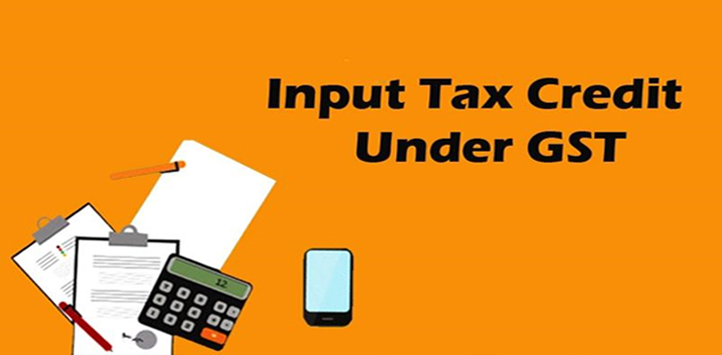Table of Contents
- ITC mechanism under GST
- Amendment by the CBIC
- Impact of the Notification
- Objective of the amendment
- Our Comments
1. ITC mechanism under GST
Input Tax Credit (ITC) Mechanism under the Goods and Services Tax (GST) law is a critical success factor for the compliance and administration of GST law in India. Currently, taxpayers do not have a facility/ opportunity to review the invoices uploaded by their suppliers, corresponding to their ITC claims. Taxpayers are reliant on their financial records to collate the data and report the same in the Monthly Return GSTR 3B.
The mechanism of having an invoice matching with automatic comparison and reconciliation for ITC as initially envisaged under the GST law, could have been a game changer. However, with the facility not yet being operational, GSTR 2A has been merely a reporting platform without any facility/ opportunity to seek an amendment of the contents thereof.
2. Amendment by the CBIC
While taxpayers continue to comply with this existing stop-gap arrangement notified by the Central Board of Indirect Taxes and Customs (CBIC), the CBIC has recently issued a Notification No. 49/2019 Central Tax dated 9 October 2019, seeking a curtailment/ restriction on the quantum of ITC that could be availed in case of any mismatch with the GSTR 2A vis-
a -vis the financial records. This restriction has been effected by way of an amendment to the existing law.
The relevant summary of the amendment on this aspect is given below:
Rule 36(4) of the Central Goods and Services Tax Rules, 2017 (CGST Rules) has been amended to state that Input tax credit to be availed by a registered person in respect of invoices or debit notes, the details of which have not been uploaded by the suppliers under sub-section (1) of section 37, shall not exceed 20 per cent. of the eligible credit available in respect of invoices or debit notes the details of which have been uploaded by the suppliers under sub-section (1) of section 37.
- This means that the ITC availed by taxpayer for the invoices not uploaded by their suppliers in their GSTR 1 (and therefore not reflecting in the GSTR 2A of the Taxpayer) shall not exceed 20% of the eligible ITC (invoices uploaded by suppliers in their GSTR 1 and reflecting in GSTR 3B of the Taxpayer)
- Hence, the eligible ITC should be computed as under:
- ITC appearing in GSTR 2A; and
- Lower of:
- ITC not appearing in GSTR 2A; and
- 10% of ITC appearing in GSTR 2A
3. Impact of the Notification
- The impact of the Notification could be explained by way of an example as under:
Assuming that the total ITC as per financial records for a month is INR 2000, where the ITC reflected in GSTR 2A is INR 1500 and the ITC not reflected in GSTR 2A is INR 500.
|
Particulars |
Eligibility before amendment |
Eligibility after amendment |
| ITC reflecting in GSTR 2A |
INR 1500 |
INR 1500 |
| ITC not reflecting in GSTR 2A |
INR 500 | INR 150 being the |
- Where ITC reflecting in GSTR 2A is more than 80% of the total GST ITC as per financial records, there would not be any impact/ restriction for availment of GST.
- This amendment has serious ramifications on the taxpayers and the working capital blockages consequent to restrictions on availment of GST.
4. Objective of the amendment
- This amendment is in line with the new Return format which is now proposed to be effective 1 April 2020.
- The amendment also seeks to address the large number of instances of fake invoices on the basis of which fraudulent ITC was availed by taxpayers in order to deceive and cause loss to the Government Treasury.
5. Our Comments
The amendment has several challenges for the taxpayers at the time of implementation, some of which are outlined below:
- Time of evaluation: The point of time at which the amended Rule should be applied is not clear. Whether the evaluation should be done as at the due date of filing GSTR 1, due date of filing GSTR 3B, or actual date of filing GSTR 3B, or any other date etc. is not clear. Hence, taxpayers could consider any given date for the purpose of determining the application of this provision.
- Carry forward of ITC restricted: The amendment does not address the treatment of the ITC restricted pursuant to the application of this Rule. The process and mechanism for carry forward time limits, expiry, reconciliation, tracking mechanism is not defined.
- Treatment in case of ITC under RCM: The amendment does not address the treatment of ITC availed under RCM and if the same should be considered while copulating the threshold of 20%.
- Reporting/ compliance format: The format and mechanism for reporting the ITC restrictions is not prescribed.
- Quarterly filing by small taxpayers: In case of small taxpayers undertake quarterly filing of GSTR 1, there would be issues in claim of ITC by the taxpayers claiming ITC on monthly basis due to timing differences in the claim of ITC vis-a -vis compliances by small taxpayers.
Notwithstanding the issues surrounding this amendment, it is crucial for the taxpayers to undertake a critical evaluation of the existing reconciliation processes and tracking of supplier invoices uploaded on the GST portal in order to avail ITC. Taxpayers should also consider the
working capital impact resultant out of this amendment and take necessary steps in order to avoid any business adverse impact on the business operations.
DISCLAIMER: The views expressed are strictly of the author and the firm Wankhade & Co. The contents of this article are solely for informational purpose. It does not constitute professional advice or recommendation of firm. Neither the author nor firm and its affiliates accepts any liabilities for any loss or damage of any kind arising out of any information in this article nor for any actions taken in reliance thereon.



Recent Comments